The parish and village of East Garston in west Berkshire consists of a strip of land five miles long, and is one of a series of settlements on the river Lambourn (which is noteworthy for being dry from Michaelmas to Candlemas, but flowing for the rest of the year). Alongside and parallel with the river runs the road from Newbury to Lambourn.
The Lambourn Valley branch of the Great Western Railway ran through the village, which had its own station until closure of the line in 1960.
There is no West Garston. East Garston is a corruption of Asgar, the name of the Saxon lord of the manor.
Size
4,409 acres (1,784 hectares)
Population
623 in 1851; 459 in 2011
Hundred
Lambourn
Poor law union
Hungerford
Registration district
Hungerford
Present-day local authority
West Berkshire
Grid reference
SU 36 76
Adjoining parishes
Lambourn, Letcombe Bassett (now Oxon), Fawley, West (now Great) Shefford and Hungerford
Genealogical resources
See Berks FHS Books for coverage of this parish in the society’s range of CDs.
See also Berkshire Record Office holdings.
Links
The most informative village website carries many pictures and much local history, as well as a page for genealogical enquiries.
Details of the former East Garston station
Published local history
East Garston past & present; a portrait for the millennium
(East Garston Millennium 2000 Committee, 1999)
Anglican church and parochial organisation
East Garston lies within the deanery of Newbury and the archdeaconry of Berkshire, which transferred from Salisbury diocese to that of Oxford in 1836.
At the west end of the village street is the church of All Saints. The medieval building was modernised in 1876. Little of the original church remains, save for the north and south doorways, and a small pillar piscina dating from about 1200.
Other churches
According to a Post Office directory of 1869 there were Wesleyan and Primitive Methodist meeting houses in the village. The former opened in 1860, replacing a chapel believed to have been serving the village for the previous half-century. It still operates.
Quakers are thought to have lived in East Garston since the eighteenth century, meeting first at Lambourn Woodlands and later (1909-39) in a cottage called Cornbaggers. Subsequent meeting houses included an old dairy, a barn and a vast packing crate set up in the garden of Yew Tree.
Schools
East Garston had a National school from at least 1840. This Victorian building may have been on the same site as the school which replaced it in 1872, built for 60 children. Berkshire Record Office holds records for the school from 1871. East Garston school finally closed, the last entry in the school ledger being dated 25 January 1968.
Other local history
Farms
- Manor Farm, perhaps on the site of the capital messuage which existed here in the 14th century
- Goldhill Farm in the village street
- Maidencourt Farm on the river between East Garston and West Shefford
- Poughley, a former manor and twelfth-century Augustinian priory, lies in the south of the parish. The priory estate was broken up at the time of the Dissolution, and subsequently became a farm.
- Mabberleys Farm
- The Goodings, one mile south of East Garston. An old farmstead called Gooding’s Farm stood there until the 1930s, when the house and five acres of grounds were developed into a country house, pictured below. It was taken over by the Admiralty in the early years of the Second World War, and later (July 1943) the entire estate of 1,000 acres (including Parsonage and Pounds farms) was acquired by Country Life magazine to run as a model estate. Later still the house and grounds were acquired by two successive communities of Roman Catholic nuns. The Goodings now consists of nine luxury houses together with a chaplain’s cottage and a head gardener’s cottage, all set in 12 acres.

Racing
Many of East Garston’s farms (first Pounds, later Parsonage and Mabberley) have at one time or another been racehorse trainers’ yards, and gallops called Summer Down and Winter Down have been in regular use for centuries. The most famous equine names associated with the village have been Golden Miller (five times winner of the Cheltenham Gold Cup) and Bogskar (1940 Grand National winner).
The village pub is the Queen’s Arms.
The village hall at East Garston arrived by horse-drawn cart in 1926. It was half of a chapel dismantled and transported from Ashdown House. The neighbouring village of Eastbury took the other half.
